



















































Bugatti made tidal waves in 2000 when it presented the sixteen-cylinder Veyron, the marvelous luxo-missile that topped 250 mph (400 kph). As forerunner as it was, Bugatti arrived a bit late at the multi-piston party – like seven decades late. In 1930, Cadillac presented the V16 – the top-of-the-line extravaganza with sixteen cylinders. One of them is for sale; turn your pockets inside out and dig for a million bucks.
January 4, 1930. Two and a half months after the Great Crash that fused the Great Depression, America was still confident that the bull market of the previous decade would soon recover. Cadillac displayed an abundance of poised optimism that day, revealing the V-16, a car the likes of which the world had never seen before.
It all began when Cadillac became the ‘Standard of the World’ in motoring supremacy after nailing the British Dewar Trophy for engineering excellence. A trio of Model K Cadillacs were disassembled completely. The surveyors from the Royal Automobile Club of Great Britain shuffled the parts randomly, then ordered the cars to be put back together irrespective of the original build sheet number-matching setup.
immediately after the cars were completed and in running order (which was accomplished without the need for any special adjustment outside routine assembly procedures), they were put through a 500-mile / 800-kilometer flat-out endurance run. The three Caddies passed the test with flying colors, thanks to the watch-making-like precision of their build – not too bad for 1908 carmaking finesse.
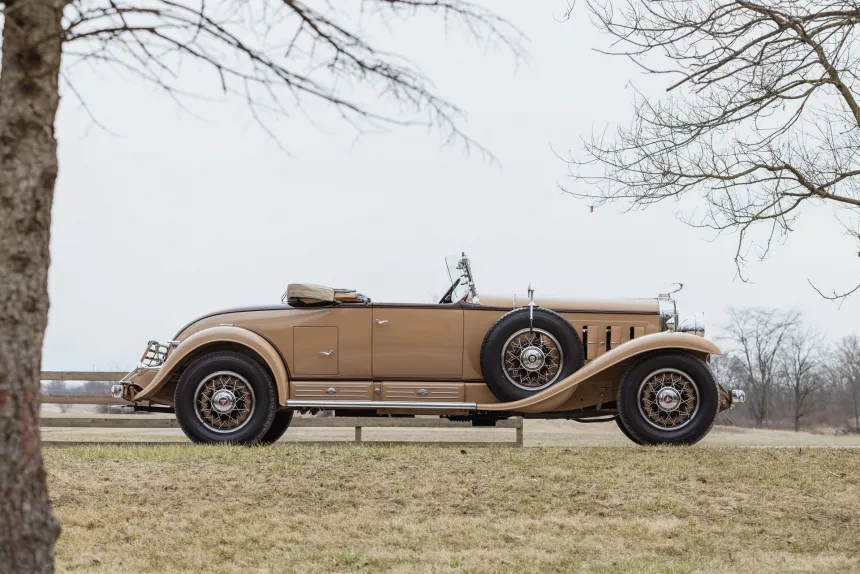
Photo: RM Sotheby’s
Seven years later, Cadillac introduced the V8 engine to America – but the timing wasn’t great at all. That same year, Packard put out the V12 – the first car company in the world to do so – and completely stole the show from Cadillac. In 1923, Packard retired the twelve-piston offer, and Cadillac was once again the top dog in the pack.
Seven more years went by, and Cadillac went all in: In January 1930, the sixteen-cylinder car was offered to a still-prosperous America. To this day, only two other carmakers have put a v16 into regular production. Marmon Motor Car Company from Indianapolis was the rivel that threatened Cadillac’s supremacy in the late 20s. The Indiana automobile constructor started working on a V16 in 1927 (and it introduced it in 1931), but this time, Cadillac took precautions.
More accurately, it took the designer of the Marmon V16 engine, Owen Nacker, and hired him to build a Cadillac version of a sixteen-piston powerplant. In 1929, the project was completed. A body designed by Harley Earl was chosen as the demonstrator for the new engine, the most powerful America had seen until then in a passenger car.
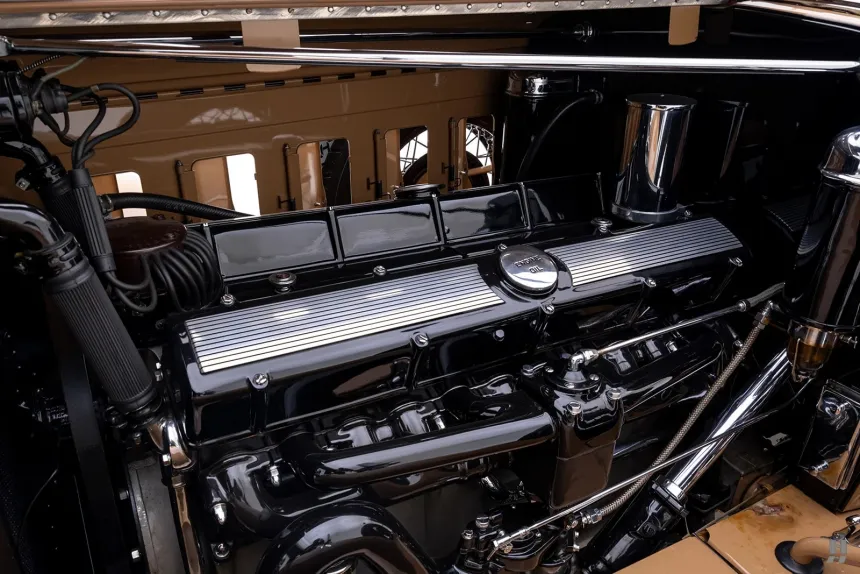
Photo: Hyman Ltd
The Cadillac V16 was two straight-eights with a common crankshaft. The cylinder bank angle was a narrow 45-degree, and each array of eight cylinders had its separate fuel and exhaust system. Not only was it a premiere regarding the number of cylinders, but the big motor, 452 cubic inches in displacement (7.4 liters), had overhead valves. It was the first time a Cadillac deployed this architecture featuring hydraulic valve adjustment. This was a world automotive premiere, and it rendered the V16 incredibly smooth and almost noiseless.
The big motor had a 3×4-inch bore and stroke (76.2 mm x 10.16 mm), a 5.5:1 compression ratio, two single-barrel carburetors, and produced 161 horsepower (163 PS) at 3,400 RPM. But the astounding aspect of the V16 was its low-end torque: 318 lb-ft (431 Nm) available at 1,400 RPM that allowed the big car to be driven at idle speed in third gear (the top range for the manual transmission) without stalling.
The story of the engine is shrouded in cloak-and-dagger mystery and spy-game-like secrecy: Cadillac general manager Lawrence Fisher purposefully misled the press into spreading the rumor that the division was developing a V12 engine. To make it even more gullible, blueprints of the real V16 engine were annotated with deceptive indications that the motor was a proposal for a GM bus engine platform.
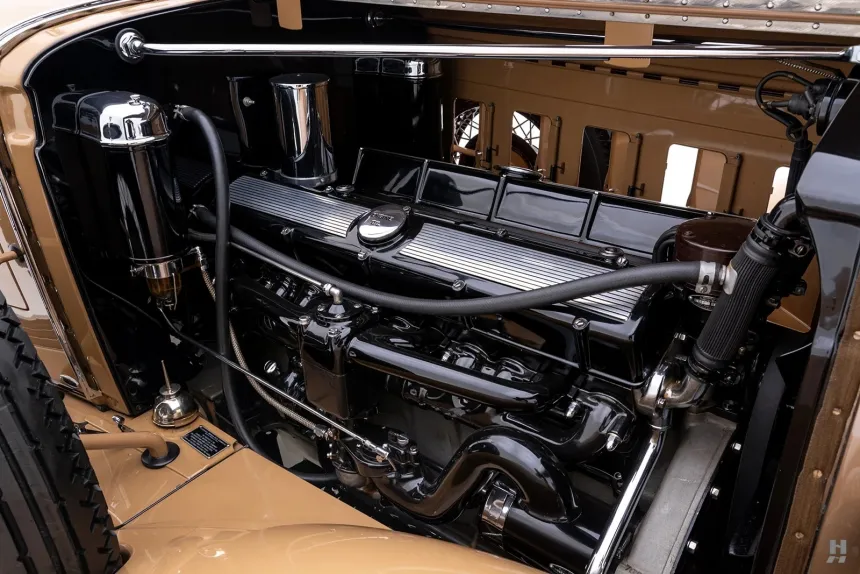
Photo: Hyman Ltd
But the truth broke cover in early 1930 at the New York car show, marking the traditional debut of the new model year. (That would change five years later at the request of the President to even out employment in the automotive sector in the wake of the Great Depression. To clear out all confusion, that would be Franklin Roosevelt, the President of the United States of America). The V16 shone so brightly that it captured and captivated the eyes of the public and media.
Cadillac’s V-16 (named after the engine) was the first automobile to have its wiring fully concealed, either routed out of sight or tucked under a cover inside the Vee of the cylinder banks. Even the sparkplugs were fitted inboard, thus rendering a very smooth and elegant finish to the onlooker. Polished and brushed aluminum surfaces and porcelain finishes grabbed attention when the hood sides went up.
The luxury carmaker installed the raging mammoth engine on a 148-inch wheelbase (3,760 mm) and offered 31 different body styles. In total, Cadillac built 2,500 V-16s in the car’s debut year. The cheapest version ordered was the Roadster (body code 4302), at $5,350. (For comparison, note that a Chevrolet Roadster of the same year retailed for $495 – eleven times cheaper than a Caddy).
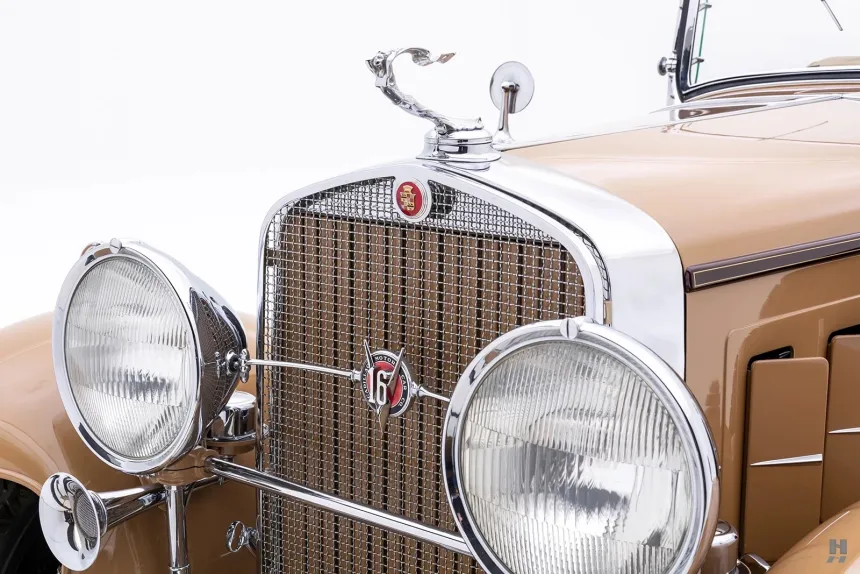
Photo: Hyman Ltd
One of the 105 V-16 roadsters built between 1930 and 1931 has a fascinating story. Between 1933 and 2014, this epitome of opulence belonged to the same family in which it arrived following the economic downturn of the Great Depression.
The car was bought new by a wealthy Massachusetts family as a ‘Hers’ automobile – the affluent husband had a chauffeured V-16 for his own personal use. However, the mighty sixteen-cylinder motor was too much for the lady, and in 1933, the Cadillac was traded in for a more domesticated Ford.
A little while later that year, a young businessman walked into the dealership and drove away in the Cadillac, for which he paid $500. He drove it until WWII rationed all automotive consumables and rendered the car exorbitantly impractical. After the war, the owner gave the V-16 to his son as a college car.
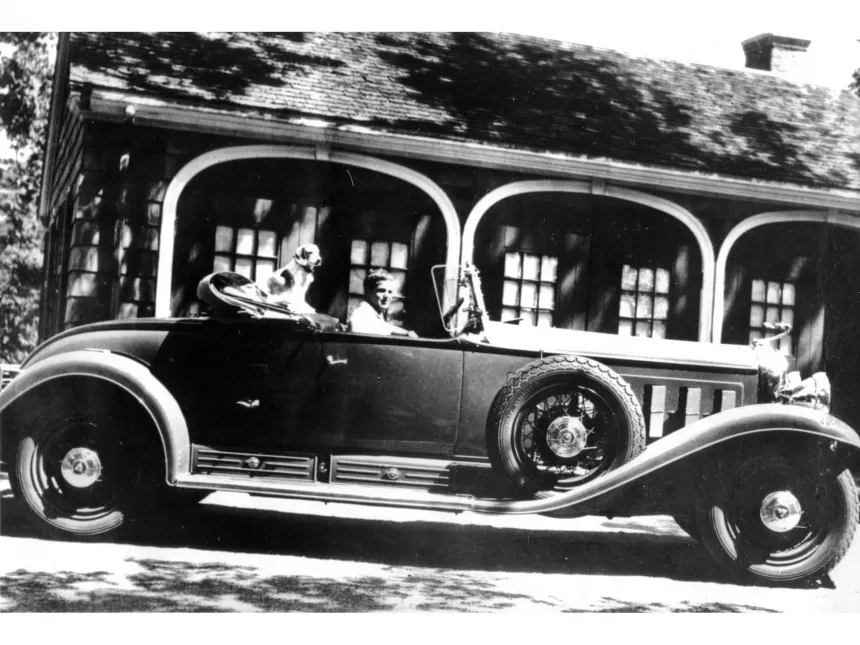
Photo: RM Sotheby’s
Until 1950, the V-16 Roadster was the daily driver for the young man who learned that the exclusive two-decade-old Cadillac wasn’t the best commuting option for Boston traffic. The car was sent into retirement in the family garage, where it lingered for over forty years. In the early 90s, a restoration was commissioned.
The car – extraordinarily original, save for side mirrors and radiator statue – was refreshed in its Boone Brown and Thorne Maroon colors, and a radiator stone guard was fitted. In 2014, the stunning Cadillac and the other 36 automobiles in the A-to-Z collection curated by John Moir, Jr. were sold for $1 million (just the 1930 Cadillac) at a public auction.
Last year, the illustrious automobile found another owner ($1.105 million); now it is available for $1.15 million. With 59,774 miles on the clock (96,176 km) and a 98.25-point Classic Car Club of America (CCCA) Primary First Prize in 1997, the 1930 Cadillac V-16 Roadster is even more bound to turn heads today than it was over nine decades ago.
